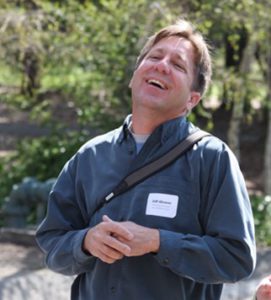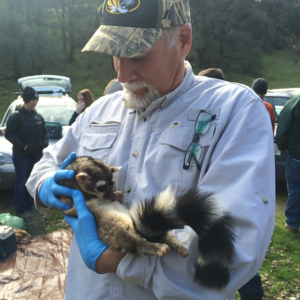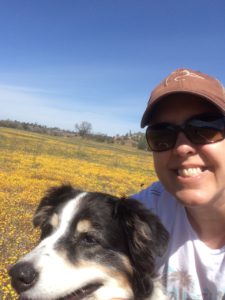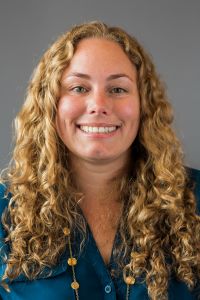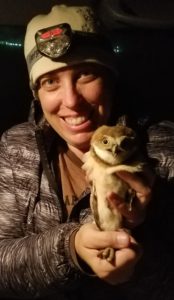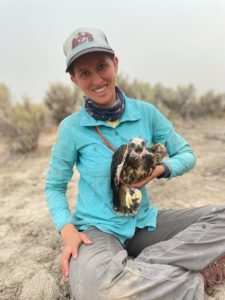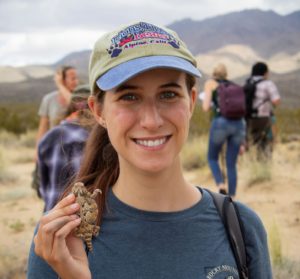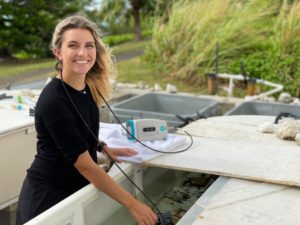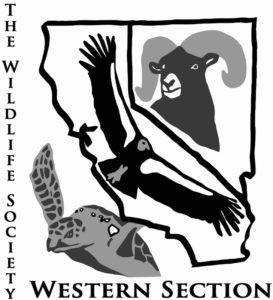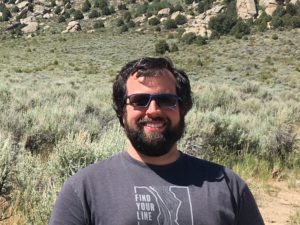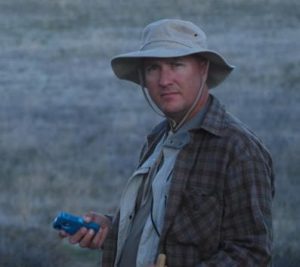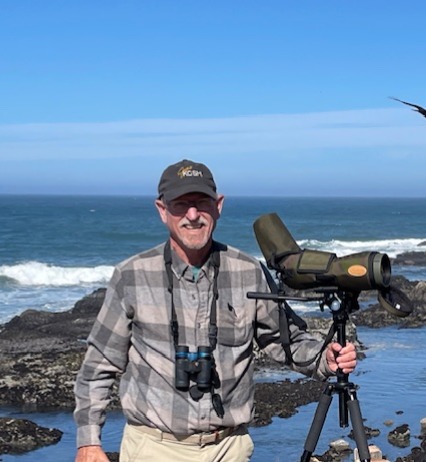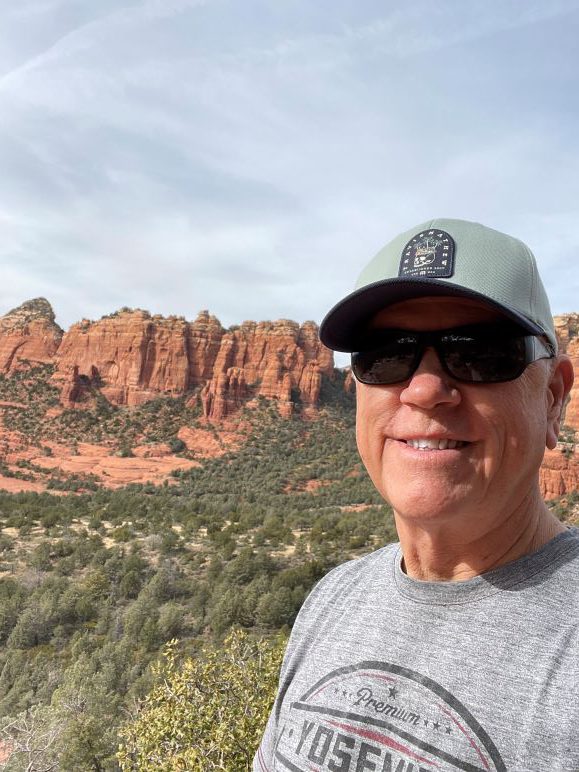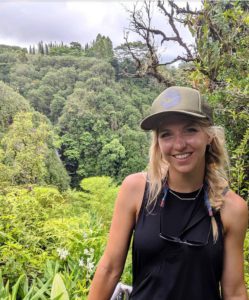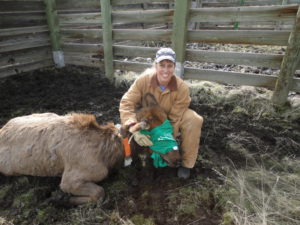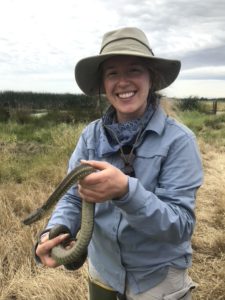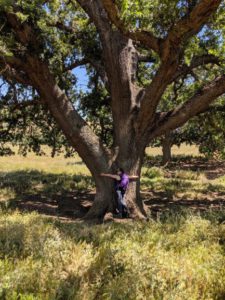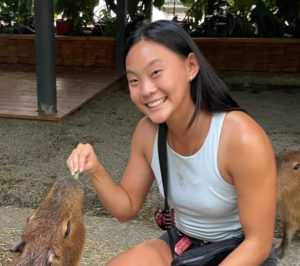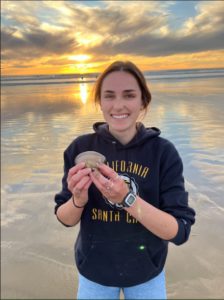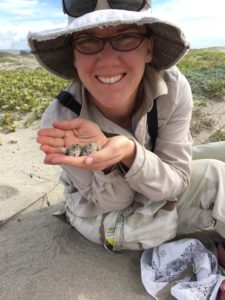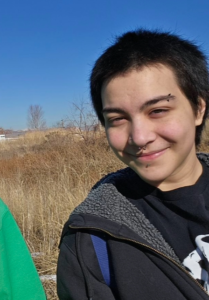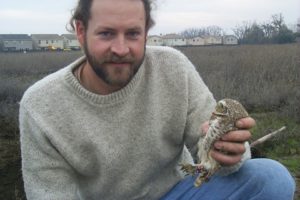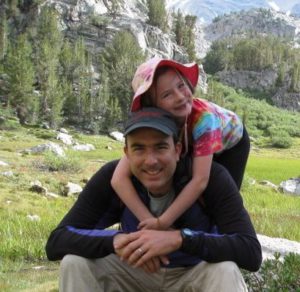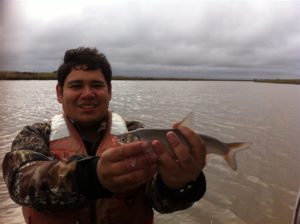Executive Board
Executive Board
The business of the Western Section is conducted by its Executive Board. Members of the Board are elected by the Section at large (President, President-Elect, Past President), by TWS members residing within the Section (Section Representative to TWS), appointed by the President (Secretary, Treasurer and Committee Chairs), or elected or appointed by Chapters (Chapter Representatives to the Section).
From the mid 1990’s to the mid 2000’s the Section employed an Executive Secretary to help with administrative duties, thus freeing up the Board to focus on serving our members through workshops, conferences, symposia, and public relations. Due to budgetary shortfalls in the mid 2000’s, the Executive Secretary position was eliminated and the Executive Board, once again, resumed the administrative duties.
The Section’s day-to-day operations continue to expand as we plan and present more workshops and conferences either on our own or with a co-sponsor. As such, the Board works with four contract individuals including Conference Planner and Project Manager (Candace Renger), Workshop Coordinator (Ivan Parr), Accountant (John McNerney) and a Webmaster (Eric Renger). The skills of these good folks help significantly to offset the operational demands on the Board, and to strengthen membership services.
The Executive Board is a microcosm of the Section’s membership: men, women, young, old, from academia, government, private industry and consulting. This page shows you who we are and what we do. We’ve asked all our Board members and committee chairs to provide a brief bio and a picture showing what they do, either professionally and/ or recreationally. We hope that readers will feel that they have much in common with us and join the Section, attend meetings and workshops, our volunteer to help out.
As a volunteer led organization, we are always looking for energetic and committed members of our profession to join us on the Board. Feel free to contact one of us if you want to help out or just learn more about the Western Section.
Officers
|
President
Jeff A. Alvarez is a herpetologist who has specialized in California reptiles and amphibians for 38 years. He has worked with California Red-legged Frogs (Rana draytonii), California Tiger Salamanders (Ambystoma californiense), Pond Turtles, (Actinemys marmorata and pallida) and Alameda Whipsnakes (Masticophis lateralis euyxanthus) for much of his career. His focus is on the conservation and natural history of herpetofauna, survey techniques development, and conducting peer-level special-status species workshops. |
President-Elect
|
|
Past-President
Brooke Langle is a wildlife biologist with 27 years of experience in the environmental consulting industry. Brooke is well regarded as an expert in environmental compliance management and has successfully led numerous large teams through complex, challenging projects. She is passionate about giving back to our community and has served on the Board of The Land Conservancy of San Luis Obispo for eight years and the Central Coast Chapter of The Wildlife Society for three years. As a Cal Poly graduate, she has emulated the “learn by doing” motto throughout her work. Over the last 12 years, she has had the honor of teaching at Cal Poly and sharing her knowledge with students. Brooke graduated from California Polytechnic State University, San Luis Obispo in 1995, with a Bachelor of Science degree in Ecology and Systematic Biology, with a concentration in Ecology. She is also a 2011 graduate of UCLA’s Management Development for Entrepreneurs Program and in 2019 completed the University of Washington Foster School of Business Minority Business Executive Program. |
Treasurer
Callie Amoaku (KAL-ee AUHM-wa-koo; she/her) is a biologist with over 17 years experience as an environmental analyst specializing in field surveys and report preparation. Ms. Amoaku is committed to professional management of environmental resources, including land conservation. Callie received her B.S. in Environmental Management with a minor in GIS from Cal Poly San Luis Obispo in 2006. She currently holds a Federal 10a Survey Permit for quino checkerspot butterfly (Euphydryas editha quino) and Casey’s June beetle (Dinacoma caseyi), and a State MOU and SCP for Western bumble bee (Bombus occidentalis), Crotch’s bumble bee (B. crotchii), Suckley’s cuckoo bumble bee (B. suckleyi), and Franklin’s bumble bee (B. franklini). As a biologist with Dudek, Callie focuses on large-project survey coordination, invertebrate surveys, and jurisdictional delineations, as well as biological report writing and endangered species permitting.
In her spare time, Callie enjoys fostering her love for nature with children, cooking, traveling, and gardening.
|
|
Secretary
Colleen Wisinski works at San Diego Zoo Wildlife Alliance as a Conservation Program Manager in Recovery Ecology, where she leads the burrowing owl recovery program. Colleen’s main research focus is the ecology and conservation of burrowing owls in Southern California, particularly of the breeding population of burrowing owls in San Diego County. She is responsible for overseeing the field team, managing and analyzing data, and working with colleagues to make recommendations about management of the species to local land and wildlife managers. Using direct observations, remote cameras, GPS transmitters, and color banding, she and the team are learning about survival, reproduction, and movement of the owls in the region. The team also uses translocation and conservation breeding to help bolster the burrowing owl population. Colleen earned her bachelor’s degree in Biology and Spanish from the University of Wisconsin – Green Bay, and her master’s degree in Fish and Wildlife Management from Montana State University in Bozeman, where she examined survival and habitat use of greater sage-grouse in southwestern Montana. Colleen has also worked as a wildlife rehabilitator where she trained several raptors for educational purposes, and as a whooping crane tracker where she used radio and satellite telemetry to monitor a reintroduced population of cranes. She has been a member of The Wildlife Society since college and has served the Southern California Chapter in multiple capacities since 2015. Colleen loves that she gets to work outdoors and be creative to figure out how to answer research questions in the field. Her love for animals and nature grew from her time spent outdoors in the North Woods of Wisconsin. |
Section Representative
Jim is Professor Emeritus at The University of Nevada Reno (the farthest east he has ever lived) where he taught and conducted research for 18 years, after 16 years at the University of Alaska Fairbanks. He grew up In Washington state and earned a B.S. in Electrical Engineering from the University of Washington. He later earned a Ph.D. from U.C. Davis in Ecology. He has studied geese on the Bering Sea coast of western Alaska since the late 1970s and he remains involved in a long-term study of Black Brant, now in its 40th year. He and students have also studied Greater Sage-grouse in Nevada since the early 2000s where they studied effects of anthropogenic development on sage-grouse, and more recently, effects of livestock and free-ranging horses. He believes in working closely with state and federal agencies to ensure that management is based on the best available science. Besides his duties as the Western Section Representative to TWS Council, he is a board member of the Nevada Waterfowl Association and a member of the Coalition for Healthy Nevada Lands, who strive for effective management of free-roaming horses. He begins a term as President of the Nevada Chapter in 2023. |
Committee Chairs
|
Professional Development Committee
|
Laura is a Wildlife Biologist from the San Francisco Bay Area. After attending De Anza College for community college, she earned a B.S. in Wildlife Conservation and Management from Humboldt State University (now Cal Poly Humboldt). Laura enjoys volunteering with conservation and research organizations such as the Santa Clara Valley Audubon Society and Golden Gate Raptor Observatory. In her free time, you can likely find Laura in her backyard gardening, hanging out with her partner and dog, or exploring parks around The Bay with friends. |
|
Student & Early Career Professional Committee
Lizzi Meisman grew up in rural Colorado and moved to Northern California over a decade ago to attend Humboldt State University (now Cal Poly Humboldt) where she completed a B.S. in Wildlife Conservation Biology in 2016. She has done research on habitat use of mesocarnivores, impacts of anthropogenic landscape change on osprey nesting success and nest site selection, and blood parasites in osprey nestlings. She is extremely active in the local community and contributes to long-term monitoring in the area in a variety of ways including volunteering at the Humboldt Bay Bird Observatory, the California Bumble Bee Atlas, and leading birding trips with the Redwood Region Audubon Society. During the hunting season, she can be found in the woods/mud hunting for birds with her fiancé and three dogs. Lizzi works as a wildlife biologist for Dudek, an employee-owned environmental consulting firm. She is also currently an NSF Graduate Research Fellow joining Dr. Matt Johnson’s Habitat Ecology Lab at Cal Poly Humboldt to continue one of the longest running raptor projects in North America, the Butte Valley Swainson’s Hawk project, for her graduate studies. Katie Rock graduated from California Polytechnic State University, San Luis Obispo in 2021 with a B.S. in Biological Sciences. During her time in college she was an officer of the Cal Poly SLO student chapter of the Western Section of The Wildlife Society for three years. In her senior year she was the Cal Poly SLO student chapter representative and was thus able to act as a member of the section board. After graduating, she had to step down from her student representative role, and began working at HDR as a biological consultant where she has been able to broaden her experience working as a wildlife biologist. After a year break settling into her post college life Katie has rejoined the section board as a student affairs committee co-chair. She hopes to help students find their place in the wildlife field just how the section helped her when she was still a student. Katie has a particular interest in herpetology and has two pet snakes herself named Udon and Soba (after the noodles). She hopes to continue to broaden her knowledge of herpetofauna while also gaining experience with a wide variety of wildlife including, bats, fungi, and mosses. She plans to apply to wildlife conservation Master’s programs in the near future once she feels ready to take that next step. Shannon Lemieux graduated summa cum laude from Oregon State University with her B.S. in Fisheries and Wildlife Sciences. During her studies, she was awarded a position as a National Science Foundation Research Experience for Undergraduates intern at the Bermuda Institute if Ocean Sciences (BIOS). At BIOS, she collaborated with reef biologist Dr. Eric Hochberg to continue research being done on coral phenology and helped compile benthic surveys for Bermuda Electric Light Company. Shannon has also traveled to Chile where she worked alongside University of Chile students to collect field data for ongoing ecological research. As she continues to pursue a research based career post-graduation, Shannon will also continue her career as a professional dancer. Some of her credits including projects such as Paula Abdul’s Straight Up Paula Tour, The Price is Right, and Broadway to the Rescue’s Big Fat Christmas Show. With dedication and passion for both of her careers, Shannon hopes to push the boundaries both in the field and on stage. |
Dr. Thea Wang is the Rare Species Program Director at Endemic Environmental Services and the associated non-profit the Institute for Conservation Research and Education (ICRE) and an on-call Biologist at Harris and Associates. Thea’s PhD thesis topic was on the social behavior of yellow-bellied marmots, advised by Dr. Peter Nonacs in the Ecology and Evolutionary Biology Department, University of California, Los Angeles (UCLA). Thea’s research, conducted in association with the San Diego Zoo Wildlife Alliance with Dr. Debra Shier, consists of studies with endangered kangaroo rats and pocket mice. Previous projects included research on the effect of artificial light at night, habitat suitability, range wide-genetic studies and small mammal reintroductions and translocations. Thea is based in Los Angeles and a member of the southern California chapter of the wildlife society. |
|
Conservation Affairs Committee Chair
|
|
|
Sam Sosa is a Certified Wildlife Biologist® based on Guam. He currently works as part of a team to manage habitat for federally threatened and endangered species. Previously, he has worked with federally threatened and endangered species in Northern California, on aquatic invasive species prevention in Northern California, on red-cockaded woodpecker recovery in Mississippi, and on invasive species removal and seabird monitoring in the Pacific. Sam also had the pleasure to work as a Community Youth Development worker for the Peace Corps in Mongolia (2014-2016). In his free time, you can find Sam exploring Guam and the western Pacific. |
Howard is a Certified Wildlife Biologist® with more than 20 years of professional wildlife and research experience. His work as a wildlife consultant focuses on the fauna and ecosystems of Northern, Central, and Southern California, and the Mojave Desert provinces and includes extensive baseline mammalian inventories, surveys focused on rare animals, and habitat assessment. He regularly works with the western burrowing owl, San Joaquin kit fox, giant kangaroo rat, blunt-nosed leopard lizard, and the Mohave ground squirrel. He worked for H. T. Harvey & Associates for 10 years and Garcia and Associates for three years; he now works for Colibri Ecological Consulting. He completed his Master’s degree at CSU Fresno in 2001. His thesis studied the interactions between the endangered San Joaquin kit fox and the non-native red fox in Kern County, CA. Prior to his work as a consultant, he spent 7 years with the Endangered Species Recovery Program as a wildlife biologist. He is an instructor for TWS kit fox and small mammal workshops and was awarded the Raymond F. Dasmann Award for Professional of the Year in 2015 by The Wildlife Society, Western Section. He is the Layout Editor for the Western Section’s new journal Western Wildlife. |
|
Historian
Don is a Certified Wildlife Biologist employed by the U.S. Forest Service and is the Regional Analyst for the national forests in California. He is involved with national forest planning and supports collaborative planning efforts by forests across the state. He also serves as the Chair for the CA Biodiversity Council’s Interagency Alignment Team. He received his B.S. in Wildlife and Fisheries Biology from U.C. Davis in 1987 and immediately started working for the Forest Service monitoring bald eagles. Don has been a member of TWS since 1995 and is a TWS Fellows. His professional interests are in forest management, fire ecology and management, and collaboration in natural resource management, particularly as it relates to sustainable wildlife habitats. Don enjoys woodworking and dabbles in decoy carving. |
Retired Wildlife Professionals Committee
Dan Airola is a Certified Wildlife Biologist and 48-year member of the Western Section. Dan has served roles as Chapter President, Awards Chair, and President (2021), and Finance Committee member. Over his career, he has worked in land management for the Forest Service and in environmental consulting, and water resource management, all in northern California. He is now semi-retired but operates Conservation Research and Planning (not acronymed CRAP!) where he primarily conducts research and prepares conservation plans for avian species in Northern California, recently including Purple Martins, Tricolored Blackbirds, Yellow-billed Magpies, Bald Eagles, Ospreys, diving ducks, and box-nesting songbirds. He also serves as editor of Central Valley Birds, a journal that emphasizes bird status, distribution, ecology, and conservation, and often involves citizen scientists. Rick Williams is a Certified Wildlife Biologist and a member of The Wildlife Society for over 4 decades during which he has served TWS and the Western Section in such roles as: Section President, Section Representative to TWS Council, Bay Area Chapter Representative to the Western Section, Section Treasurer, numerous committees and working groups, and currently as Chair of the Retired Wildlife Professional’s Committee. Rick received his B.S. in Wildlife Management from (then) Humboldt State University in 1977 and began his career working on waterfowl, wetland enhancement, and fisheries projects for the California Department of Fish and Game and U.S. Fish and Wildlife Service. In 1980 he then entered the private sector where he performed research, assessed impacts, and developed wildlife mitigation strategies for large-scale water, energy, and land stewardship projects throughout California and the western United States. Now recently retired, Rick enjoys spending time with family and friends, travel, fishing, kayaking, sporting events, birding, and a never-ending pursuit for a great IPA and the best nachos in California.
|
Chapter Representatives
|
Angel Rafael Ramirez, a Chicano hailing from Oxnard, California, developed a passion for wildlife as a child catching lizards in his apartment complex and later in a field biology course taught by a women of color. He graduated from California Polytechnic State University San Luis Obispo in 2019 with a degree in Forestry and Wildlife Biology. Motivated by the imperative of enhancing BIPOC representation in his field, Angel founded the Oxnard Birder’s Club in 2021 to introduce members of his community to biology, ecology, and environmental science through the enjoyable pursuit of bird watching. He now works as a Wildlife Biologist in Ventura County and is a father to his beautiful son, Rio. |
Erin Bell is a PhD student with the Department of Forestry and Natural Resources at Purdue University. She earned her undergraduate degree in Biology from Carroll College in 2014 and her master’s degree from Miami University in 2020. Prior to enrollment at Purdue, she gained experience in ecological research in Idaho and Montana with the US Forest Service before moving to work in the diverse ecosystems of Hawaiʻi. Working with Maui Forest Bird Recovery Project and their partners since 2019, she developed a passion for native plants and the unique relationships they hold with Hawaiʻi’s forest birds. Erin will be conducting analyses of restoration areas on Hawaiʻi Island as well as exploring the role of native avian seed dispersers in these sites in an effort to influence future management decisions for restoring avian habitat. She has been on the TWS Hawai’i Chapter board since 2022 and has recently moved into the role of Western Section Representative. |
|
Kelley Stewart is an Associate Professor of large mammal ecology at the University of Nevada, Reno. She received her BS at University of California Davis, her MS at Texas A&M University Kingsville and her PhD at the University of Alaska Fairbanks. Her research focuses on effects of density dependence, reproduction, and nutritional condition of large mammals on movement patterns, resource selection, population dynamics, and community structure. More recently her research has moved into investigating the links between nutritional condition, endocrine function, and immune function to population demographics. Kelley teaches courses in wildlife ecology at both the graduate and undergraduate levels. She was named the Teacher of the Year in 2012 by the College of Agriculture, Biotechnology, and Natural Resources at UNR. Kelley has been primary advisor for 15 graduate students working on various aspects of ungulate and population ecology, 3 undergraduate honors students, and 2 postdoctoral research associate. |
Lizzi grew up in rural Colorado and moved to Northern California over a decade ago to attend Humboldt State University (now Cal Poly Humboldt) where she completed a B.S. in Wildlife Conservation Biology in 2016. She has done research on habitat use of mesocarnivores, impacts of anthropogenic landscape change on osprey nesting success and nest site selection, and blood parasites in osprey nestlings. She is extremely active in the local community and contributes to long-term monitoring in the area in a variety of ways including volunteering at the Humboldt Bay Bird Observatory, the California Bumble Bee Atlas, and leading birding trips with the Redwood Region Audubon Society. During the hunting season, she can be found in the woods/mud hunting for birds with her fiancé and three dogs. Lizzi works as a wildlife biologist for Dudek, an employee-owned environmental consulting firm. She is also currently an NSF Graduate Research Fellow joining Dr. Matt Johnson’s Habitat Ecology Lab at Cal Poly Humboldt to continue one of the longest running raptor projects in North America, the Butte Valley Swainson’s Hawk project, for her graduate studies. |
|
Kaitlin Kozlowski is a wildlife biologist at ICF (formerly, Jones & Stokes) who received her B.S. in Wildlife, Fish, and Conservation Biology and double minors in Animal Science and English from the University of California, Davis. Kaitlin has experience studying various wildlife species in California using a variety of survey methods in collaboration with a diverse group of agency and NGO staff, landowners, and citizen scientists. In her current role at ICF, Kaitlin authors various environmental reports and conducts fieldwork including camera trapping, protocol-level and special-status species surveys and habitat assessments, and population monitoring for a variety of taxa. Her specific area of focus is on wildlife connectivity where she strives to overcome and prevent project-related connectivity challenges in an effort to help humans and wildlife coexist in our ever-expanding anthropogenic landscape. In her free time, Kaitlin enjoys hiking, practicing her photography, birding, reading, and generally spending time outdoors. |
Kathleen Grady is a wildlife biologist based out of San Francisco. She received her BS in Ecology and Evolution from UC Santa Barbara, and after working as a seasonal biologist studying birds for almost 10 years, she went back to school to get her Masters at Sonoma State University. There, she studied bird response to creek restoration on private ranches and dairies. While most of her career has been focused on birds, more recently Kathleen has been enjoying getting more experience with plants and herps — especially the adorable California tiger salamander. Kathleen volunteers as a bander for the Golden Gate Raptor Observatory and remains passionate about maintaining what makes the Bay Area special by optimizing public and private lands for both wildlife and people. |
|
Howard is a Certified Wildlife Biologist® with more than 20 years of professional wildlife and research experience. His work as a wildlife consultant focuses on the fauna and ecosystems of Northern, Central, and Southern California, and the Mojave Desert provinces and includes extensive baseline mammalian inventories, surveys focused on rare animals, and habitat assessment. He regularly works with the western burrowing owl, San Joaquin kit fox, giant kangaroo rat, blunt-nosed leopard lizard, and the Mohave ground squirrel. He worked for H. T. Harvey & Associates for 10 years and Garcia and Associates for three years; he now works for Colibri Ecological Consulting. He completed his Master’s degree at CSU Fresno in 2001. His thesis studied the interactions between the endangered San Joaquin kit fox and the non-native red fox in Kern County, CA. Prior to his work as a consultant, he spent 7 years with the Endangered Species Recovery Program as a wildlife biologist. He is an instructor for TWS kit fox and small mammal workshops and was awarded the Raymond F. Dasmann Award for Professional of the Year in 2015 by The Wildlife Society, Western Section. He is the Layout Editor for the Western Section’s new journal Western Wildlife. |
Wendy Loeffler serves as Chapter Representative to the Western Section. She has been involved with the local Southern California Chapter for 15-20 years and have worn many hats over the years, including membership chair, newsletter coordinator, and spent a number of years as the Southern California Chapter President. She currently volunteers at the Western Section level as part of the annual conference Breakfast Roundtable committee and serve as an ombuds. Personally, she is an alumnus of CSU, Fullerton and holds both a BA and MA in Biology. She is currently a senior biologist/environmental program manager with RECON Environmental in San Diego. She has been with RECON for 28 years. She has many hours of field experience, mainly wildlife, and hold permits to survey for a number of federally and state listed species, Quino checkerspot butterfly, coastal California gnatcatcher, fairy shrimp, and Crotch’s bumble bee. While she is still able to get out in the field on occasion, she spends more time managing projects these days along with wrangling a teenager at home. |
|
Joseph is a student at Cal Poly Humboldt studying Wildlife Management and Conservation. Previously, he attended New Mexico State University studying wildlife as well. His love for nature and wildlife got started in Vermont surrounded by the Green Mountains. This love continued and grew when he moved to the high desert and grasslands of Southern Colorado. He hopes to work with carnivores studying their ecology and interactions with humans, while aiding in their conservation. In his free time, he enjoys hiking, looking for and watching wildlife, and being outside with friends and loved ones. |
Kerri Young is a third-year student at University of California, Davis, where she is pursuing a degree in Wildlife, Fish, and Conservation Biology. Growing up, she developed a love for exotic wildlife while traveling, which sparked a lifelong passion for animals. With a special interest in animal behavior, Kerri is currently an undergraduate research intern at the Sih Lab researching gecko behavior and cognition. She previously gained valuable experience interning abroad at Rescue Center Costa Rica, aiding veterinarians to maintain and better the welfare of sloths, toucans, coatis and various other exotic wildlife. Alongside her dedication to make a positive impact on animal welfare and conservation, Kerri aspires to become a veterinarian specializing in wildlife or exotics and is currently working as a veterinary assistant. When not observing or working with animals, Kerri loves to workout, hike, play soccer, and take a nap outside in the shade. |
|
Anna is currently a student at Cal Poly SLO studying Environmental Management and Protection with a concentration in Wildlife Biology. She is avidly involved in her schools chapter of the Wildlife Society, as well as other on campus and community organizations. She currently works as an undergraduate research assistant in the Marine Conservation Lab conducting population assessments on the Pismo Clam. She is also assisting with the development and construction of Biodiversity measuring sites to gather data on local ecosystems in collaboration with CDFW and Cal Poly faculty. In addition to research, she has a passion for outreach, and contributes to the education and monitoring team for the Sea Otter Savvy Organization. Anna’s passion for wildlife and conservation is undeniable, and through her involvement in her student chapter of TWS, she has seized numerous opportunities to advance these passions. Being chosen as her chapter’s representative is a thrilling achievement, reflective of her dedication and enthusiasm. |
Jamie is a PhD student at the UC Santa Barbara Bren School of Environmental Science & Management where she is studying restoration ecology and wildlife population dynamics in the coastal dune ecosystem. She earned her Bachelor of Science in Ecology and Systematic Biology from Cal Poly, San Luis Obispo, and has worked as a wildlife biologist on the central coast for over 15 years. In 2020 she earned her Master’s in Environmental Science and Management at Bren, specializing in conservation planning and environmental data science. Her Master’s thesis involved updating habitat connectivity assessments for The Nature Conservancy and the Staying Connected Initiative in the Adirondack Mountains. She has served on the board of the California Central Coast Chapter as Secretary and Treasurer, and is now the UCSB Student Chapter Representative. She is passionate about wildlife conservation and started her career by tracking California condors at Hi Mountain Lookout and studying kangaroo rat ecology in the Guadalupe-Nipomo Dunes and Carrizo Plains National Monument. Looking to expand her work abroad, she spent time in the tropics studying avian demography and breeding biology in the Amazon basin and Andean cloud forest in Peru, banding forest birds in Hawai’i, and studying mantled howler monkey foraging ecology in Costa Rica. For several years, she has worked for Point Blue Conservation Science at Vandenberg Space Force Base, studying snowy plover productivity and survivorship and coastal dune ecology. When not climbing sand dunes looking for plover chicks on Vandenberg’s beaches, she enjoys native plant gardening, harboring native bees in her yard, baking goodies with locally-grown fruit, and photographing wild things. |
|
Hello my name is Jacob Smith and I am a third year honors student at the University of Nevada Reno majoring in Wildlife ecology and conservation with a minor in biology. I grew up in the outskirts of Las Vegas where I spent ample time catching and learning about reptiles in both arid and riparian ecosystems. I have always worked with reptiles either as pets or observing them outside. This upbringing has led me to a desire to further my career in herpetology research. I would love to either focus on endangered herp management and/or reptile social behavior. I hope to continue my education by obtaining a masters and PHD. My main motivation, besides utter fascination with reptiles, is helping an under-appreciated taxa that is vastly unique and imperative to ecosystem health get a voice in conservation and the public’s eye. When I am not at school or working I take any chance I get to explore the great outdoors. Either with working on a trail crew (2023 summer season for Friends of Nevada Wilderness), helping with rattlesnake research (worked with first year masters student Colton Irons) at great basin national park, hiking, camping, snowboarding (in Tahoe), walking my dog, and climbing. |
Truckee Meadows Community College
Rico Bruan is a first-year student majoring in Biology at Truckee Meadows Community College. With a passion for entomology, Rico dedicates their free time to learning more about the invertebrates of the Reno/Sparks area. Their ecological and wildlife experience comes from years of volunteering with local nonprofits to restore and maintain nature preserves along the Truckee River. Rico enjoys hiking the beautiful trails the Great Basin offers and identifying all sorts of inverts along the way. Keeping tarantulas and millipedes as pets, Rico strives towards a future where all animals- big or small- can be appreciated equally. |
Other Great People
|
Bookkeeper
John received his B.S. in Wildlife Management from Humboldt State University in 1996. He has since worked various wildlife and natural resource related positions with Nevada State Parks, U.S. Forest Service, California Department of Fish and Game and in private consulting. Since 2001, John has served as the staff wildlife biologist for the City of Davis, California. The position keeps him busy with a full range of duties, including habitat planning and restoration, wildlife and habitat management, CEQA document preparation/ review, and natural resource interpretation. His professional interests include wetlands and grasslands restoration and management. In his spare time John enjoys woodworking, day hikes, camping, backpacking, nature watching and sharing his love for wild areas with his wife, two sons, and two dogs.
|
Project Manager and Meeting Planner
Candace is the Project Manager and Meeting Planner for The Western Section. In her free time you will likely find Candace on a mountain peak in the Sierras, rock climbing, mountain biking or gardening in her backyard. |
|
Webmaster
Eric is the Western Section Webmaster While working as an embedded software programmer during the day, Eric manages the TWS website during the evenings. |
Workshop Coordinator
Ivan Parr is the Western Section’s Workshop Coordinator. Ivan loves the idea of promoting education and experience when it comes to understanding wildlife and their habitats. A botanist as well as a wildlife biologist, Ivan spends his (albeit limited) free time searching the Golden state for unique treasures of biodiversity. He is currently trying to compile a photographic index of California’s endemic species. |
The Wildlife Society – Western Section Presidents
| A. Starker Leopold | 1954-1955 |
| Walter Howard | 1955-1956 |
| Frank Kozlik | 1956-1957 |
| Ray Dasmann | 1957-1958 |
| Chuck Fisher | 1958-1959 |
| Hank Hjersman | 1959-1960 |
| Harold Bissell | 1960-1961 |
| William Graf | 1961-1962 |
| J. Harold Severaid | 1962-1963 |
| Don Kelley | 1963-1964 |
| Howard Leach | 1964-1965 |
| Joe Hendricks | 1965-1966 |
| Phil Arend | 1966-1967 |
| Bruce Browning | 1967-1968 |
| Stan Harris | 1968-1969 |
| John Cowan | 1969-1970 |
| Jim Yoakum | 1970-1971 |
| Mert Rosen | 1971-1972 |
| Marshall White | 1972-1973 |
| Richard Laursen | 1973-1974 |
| Dick Teague | 1974-1975 |
| Dick Hubbard | 1975-1976 |
| Doug Donaldson | 1976-1977 |
| Lew Nelson | 1977-1978 |
| Brian Hunter | 1978-1979 |
| Hal Salwasser | 1979-1980 |
| George Tsukamoto | 1980-1981 |
| Dean Swickard | 1981-1982 |
| Kent Smith | 1982-1983 |
| Robert Fields | 1983-1984 |
| Judy Tartaglia | 1984-1985 |
| Donald Armentrout | 1985-1986 |
| James Brownell | 1986-1987 |
| Steve Holl | 1987-1988 |
| John Kie | 1988-1989 |
| Robert Schmidt | 1989-1990 |
| Scott E. Frazer | 1990-1991 |
| Ann H. Huffman | 1991-1992 |
| Richard Williams | 1992-1993 |
| Richard Anderson | 1993-1994 |
| Marti Kie | 1994-1995 |
| Mike Chapel | 1995-1996 |
| Dale McCullough | 1996-1997 |
| Reginald H. Barrett | 1997-1998 |
| Dean Carrier | 1998-1999 |
| Linda Spiegel | 1999-2000 |
| Michael Morrison | 2000-2001 |
| Barry Garrison | 2001-2002 |
| Catherine Hibbard | 2002-2003 |
| Lowell Diller | 2003-2004 |
| John Harris | 2004-2005 |
| Cynthia Graves Perrine | 2005-2006 |
| Kevin W. Hunting | 2006-2007 |
| Julie Vance | 2007-2008 |
| Rhys Evans | 2008-2009 |
| Scott D. Osborn | 2009-2010 |
| Armand G. Gonzales | 2010-2011 |
| John McNerney | 2011-2012 |
| Linda Leeman | 2012-2013 |
| Douglas Bell | 2013-2014 |
| Natasha Dvorak | 2014-2015 |
| Don Yasuda | 2015-2016 |
| Rachel Sprague | 2016-2017 |
| Rocky Gutierrez | 2017-2018 |
| Jeff Davis | 2018-2019 |
| Matthew Bettelheim | 2019-2020 |
| Kelly Holland | 2020-2021 |
| Dan Airola | 2021-2022 |
| Katie Smith | 2022-2023 |
| Randi McCormick | 2023-2024 |
| Brooke Langle | 2024-2025 |
| Jeff Alvarez | 2025-2026 |
Meeting Minutes are available to members upon request. Please contact secretary@tws-west.org

